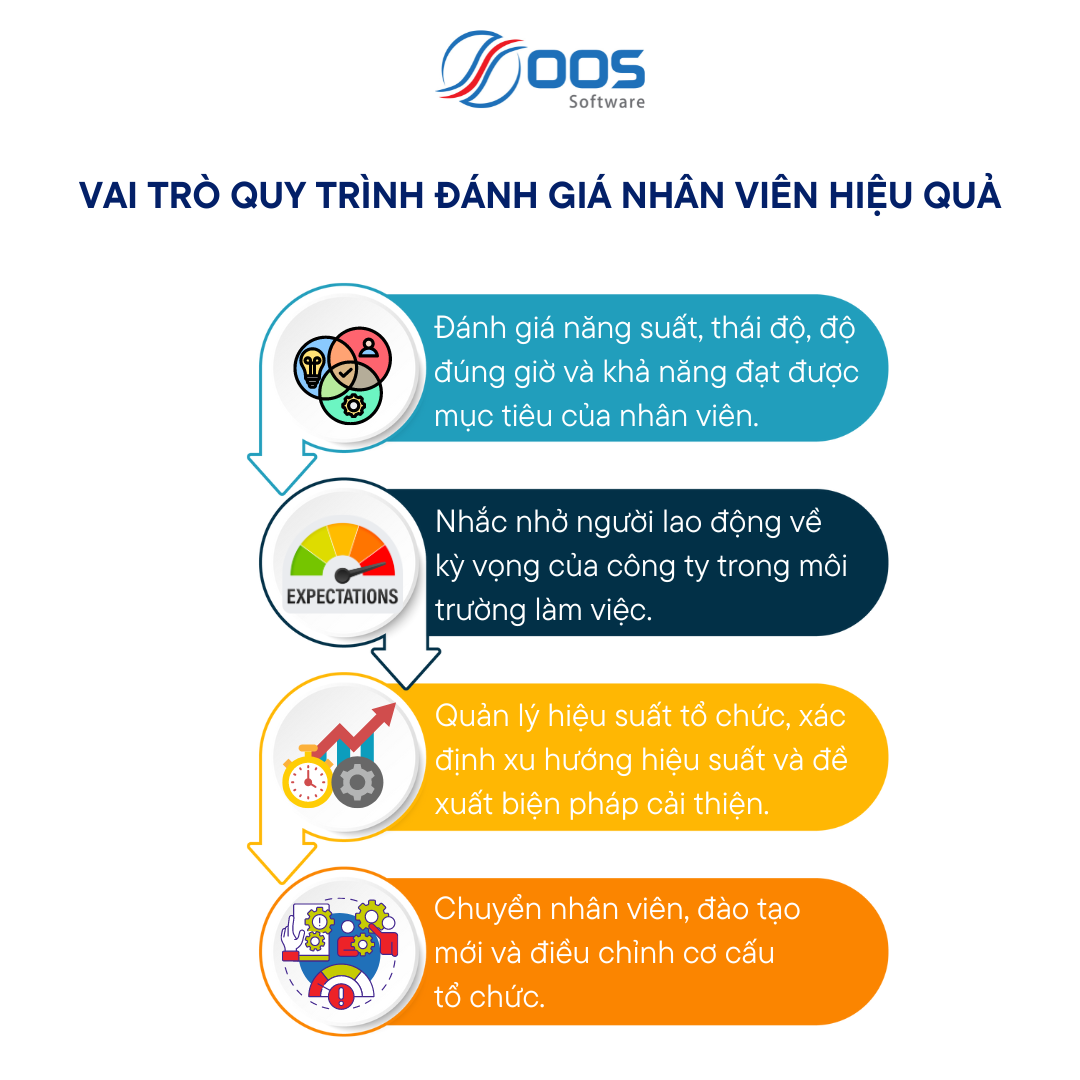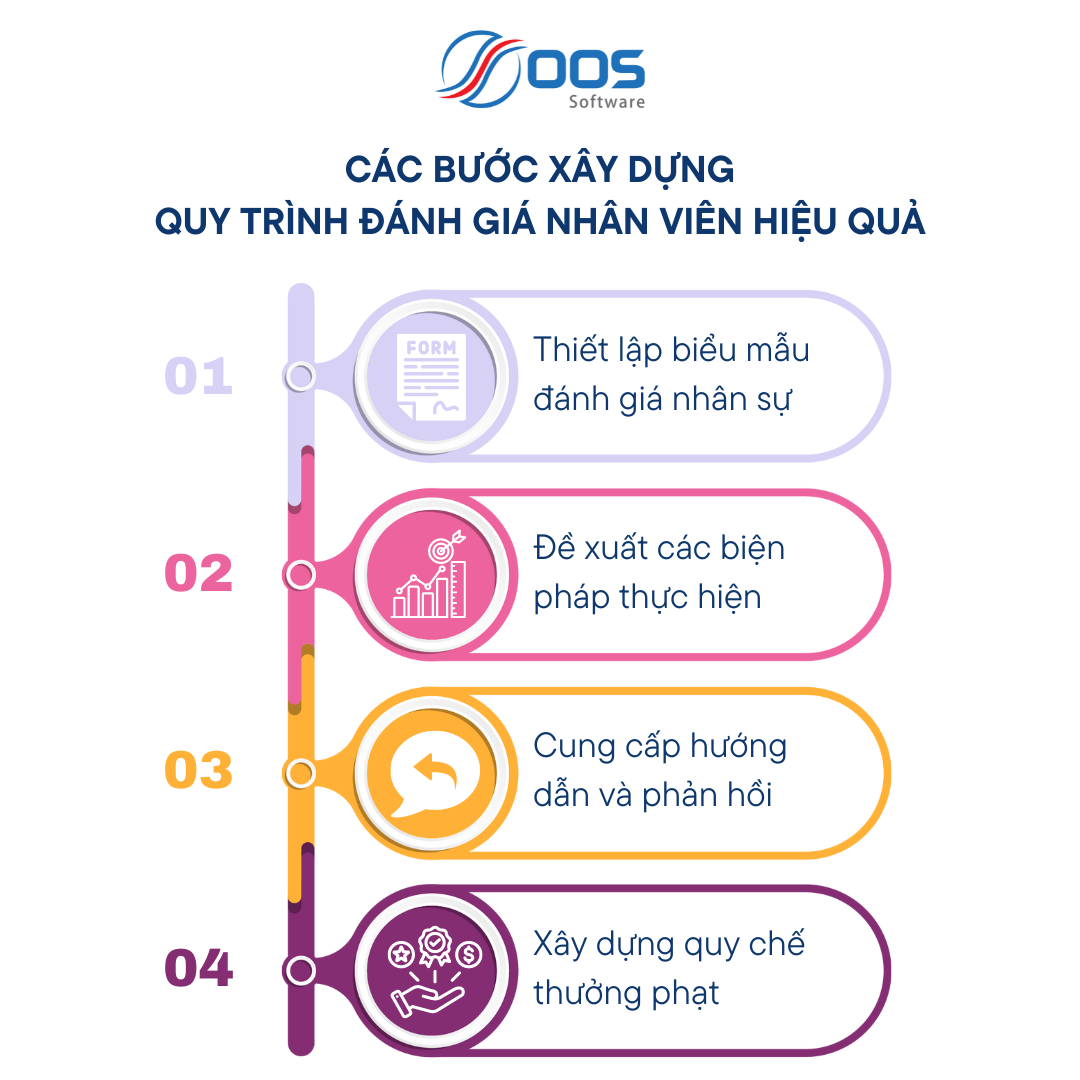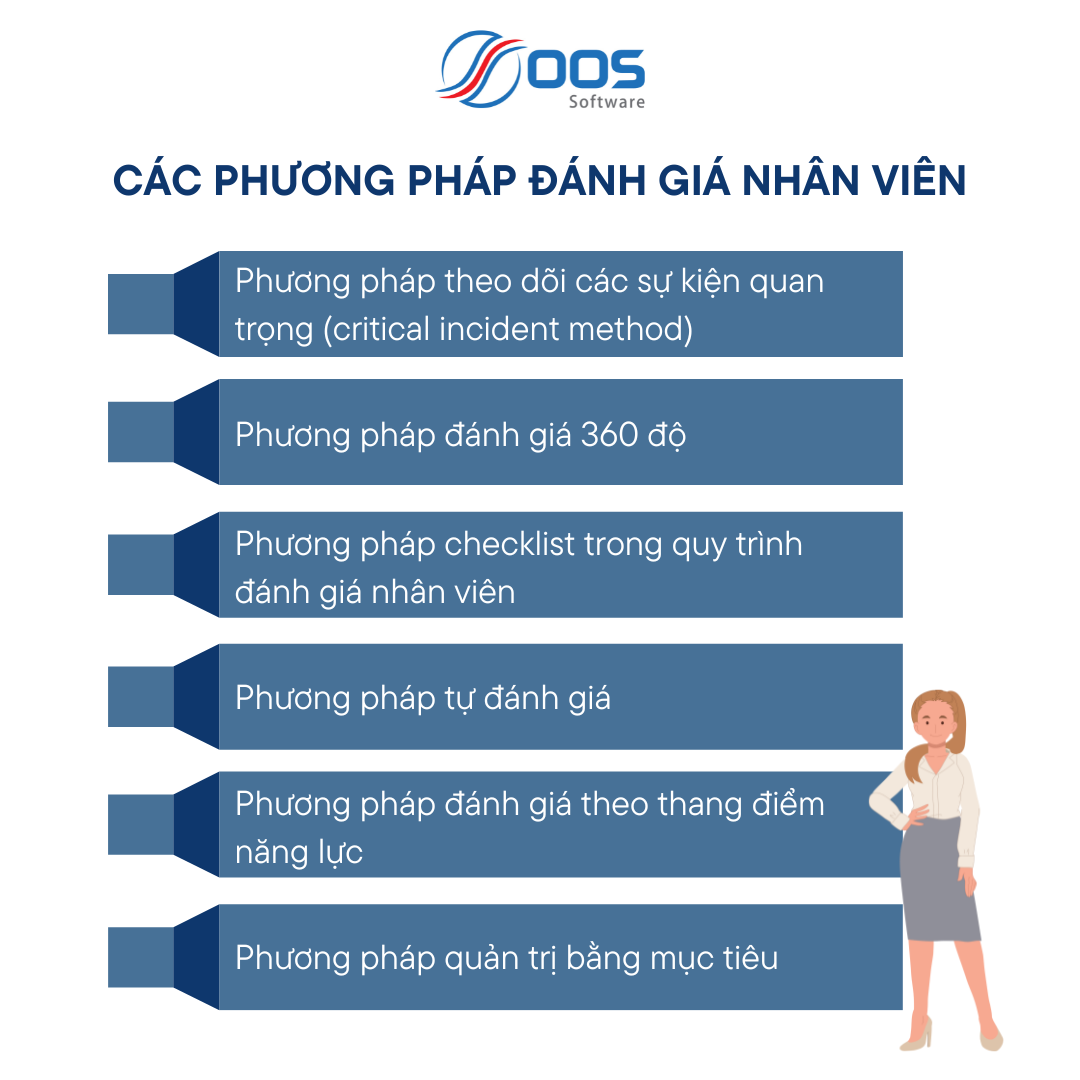Human resources are considered an important foundation, contributing to the development of businesses. A good leader cannot make a business successful without the help and dedication of his employees. It is for this reason that the employee evaluation process is always paid attention and promoted by businesses.
The role of an effective employee evaluation process
The employee appraisal process is a management method used to evaluate individual performance over a given period of time, with respect to the criteria of productivity, attitude, punctuality and ability to achieve. employee goals.
An effective employee evaluation process will help remind employees of the company's expectations in the work environment. Data collected from this process supports businesses in making decisions about job options, such as promotions, salary increases, and appropriate layoffs.
Additionally, this process plays an important role in organizational performance management, providing information to identify performance trends and recommend improvement measures. Decisions about bonuses and fair evaluations are also based on the results of employee evaluations. Besides, this process helps build team spirit and enhance positive interactions between work groups.
By identifying talent that is excellent and needs improvement, the employee appraisal process supports decisions about employee transfers, new training, and organizational structure adjustments. Finally, it plays an important role in creating motivation and commitment, through recognizing employees' successes and efforts, as well as facilitating their commitment to the organization's goals and values. .

Steps to building an effective employee evaluation process
Building an effective employee evaluation process is an important step to help businesses define and measure employee performance.
Step 1: Set up a personnel evaluation form
The employee evaluation process needs to be carried out fairly, consistently and objectively to protect employee interests and at the same time minimize legal risks for the business. To ensure consistency in this process, it is important to use a standard assessment form for each assessment.
The appraisal form should focus specifically on essential areas of the job, helping to make the employee evaluation process more meaningful and flexible. Limiting focus areas helps focus on the most important aspects, helping businesses and employees quickly and effectively address important issues.
Step 2: Propose measures for the employee evaluation process
To ensure fairness and impartiality in the employee evaluation process, establishing specific measures is important. Performance measures are criteria that define how employees should perform their jobs. This requires personalization, depending on the industry and specific role of each employee.
Step 3: Provide guidance and feedback
Guidance and feedback play an important role in the employee evaluation process. Before implementing a performance appraisal system, make sure everyone doing the appraisal understands what type of feedback is expected, how to give it, and how to receive it from employees.
Avoid covering up shortcomings and focusing only on strengths, instead, understand your employees' weaknesses. Employees can be proud and confident when they are supported to improve in these areas. Therefore, when solving problems, it is necessary to propose specific expectations for improvement and support employees to meet those suggestions.
Step 4: Develop regulations on rewards and punishments in the employee evaluation process
The employee evaluation process needs to combine disciplinary procedures and clear reward and punishment regulations. Despite detailed reviews and discussions about improvement, some employees may not improve. You need to be prepared to handle such a situation by having clear, written disciplinary and termination procedures in place.
This process needs to take place privately. With the disciplinary reason clearly stated, after the verbal warning, the employee is allowed to respond, but the communication must be brief.
How written warnings are handled plays an important role in the employee appraisal process, especially in making employees aware of problems with their performance. Description of the problem including objective findings and reasons for discipline.
Step 5: Schedule an assessment
After finalizing the employee evaluation process, including forms, evaluation criteria, feedback guidelines, and disciplinary procedures, deciding on a schedule for conducting performance evaluations is important. Some organizations conduct annual reviews at the same time, while other methods choose a time within 30 days of each employee's work anniversary.
Regardless of the method chosen, the most important thing is to make sure each appraiser adheres to deadlines. Ignoring employee reviews can be devaluing and impact their morale and performance.
READ MORE: 5 new HR trends in 2024

Methods in the employee evaluation process
Employee evaluation is an important part of human resources management, helping to measure performance and shape employee development. In a context that requires transparency and flexibility, choosing the right method for your needs and organizational characteristics is key to optimizing value from the employee evaluation process.
Critical incident method
This is the process by which HR managers note employee behaviors (both positive and negative) during work over a specific period of time. These notes are then compiled into the final acceptance report. This method is especially useful when it comes to tracking employee progress over time, while also providing managers with an opportunity to provide timely feedback.
However, it also carries some limitations such as the possibility of missing notes or taking notes that are not objective, as well as can create an uncomfortable feeling for employees when they know all their mistakes are recorded. .
360 degree assessment method
This is an employee evaluation process based on feedback from many sources. Each employee will receive a questionnaire with a list of colleagues' names and competency criteria to obtain a detailed assessment. Although it brings high objectivity, administrators should also note that it can make the employee evaluation process complicated and difficult to control.
Checklist method in the employee evaluation process
The checklist method is a series of questions used to evaluate employee performance, designed to receive feedback from the direct manager. Questions are often presented in a “Yes/No” format, to assess the employee's specific capabilities. Although the advantage of this method is that it increases the simplicity and focus of the employee evaluation process, there is also a risk of lack of objectivity and inaccuracy due to collecting information based on employees' personal opinions. manage.
Self-assessment method
The self-assessment method in the employee appraisal process is used to help employees see for themselves and make improvements on areas for improvement that they may not be aware of. This result will lead to a discussion with the line manager to clarify areas for improvement and determine how to exploit strengths and minimize weaknesses.
Evaluation method based on capacity scale
This is also one of the most popular methods in the employee evaluation process. For each job position, there are specific sets of competencies, and each employee's competencies will be evaluated through a scale from excellent to very poor. This method allows management to compare performance between employees and highlight competencies that need to be developed or improved.
Management by objectives method in the employee evaluation process
In this method, employees and direct managers collaborate to develop a list of specific goals to be achieved within a certain period of time. These goals need to meet SMART criteria: specific, measurable, attainable, relevant and time-bound.

6 employee capacity assessment forms
To support the employee evaluation process, businesses often use capacity evaluation forms. Let's explore the details to optimize human resource management and ensure sustainable success for your business. .
Simple performance appraisal form
This form provides only basic employee information, a rating system from poor to excellent, and additional notes or comments.
Although this is not an in-depth, qualitative review, it does provide a general overview of the employee's performance and can guide the conversation between management and employees, contributing to process improvement. Employee appraisals just got easier.
Employee attendance form
Business managers can use this simple template to control employee timekeeping. Regularly tracking information such as time worked, vacation days, and sick leave can aid in a manager's performance appraisal process. At the same time, this is also an important tool in the field of human resources, helping to calculate salaries and bonuses for employees conveniently.

Employee training plan form
This form is designed to facilitate the employee evaluation process. A form with a clear training schedule and objectives helps training run smoothly, while also providing reference material for both new employees and managers.
Once the onboarding period is completed, the form can be used as a progress assessment tool and baseline for the development plan. Manager feedback during each phase of training will be helpful in evaluating employee performance.
Annual management evaluation form
This annual evaluation form focuses on evaluating management capacity. It requires listing the competencies needed to evaluate job performance, then uses a rating system and comments section to provide comprehensive feedback.
This template also provides a summary of competency ratings for an overview of the manager's performance.

Group evaluation form
In cases where the performance of a department or division needs to be evaluated, this template provides the ability to rate each individual across a variety of skills, then aggregate the rating for the entire team.
This is a simple evaluation form that helps highlight the strengths and weaknesses of a specific group of employees during the employee evaluation process.
Annual performance review form
This annual performance review form is divided into four sections: current responsibilities, performance review, career development plan, and employee input. This form is effective in detailing employee performance, including special achievements as well as areas that need improvement.
This appraisal form encourages open interaction between employees and management, to gain detailed evaluation and feedback from the process staff assessment.

>> DOWNLOAD NOW 6 effective employee evaluation forms here
The employee skills evaluation form is an important tool for recording and the basis for management to evaluate employee capabilities. Hopefully this article has presented clearly and in detail how to use the form, bringing a lot of useful information to readers.























